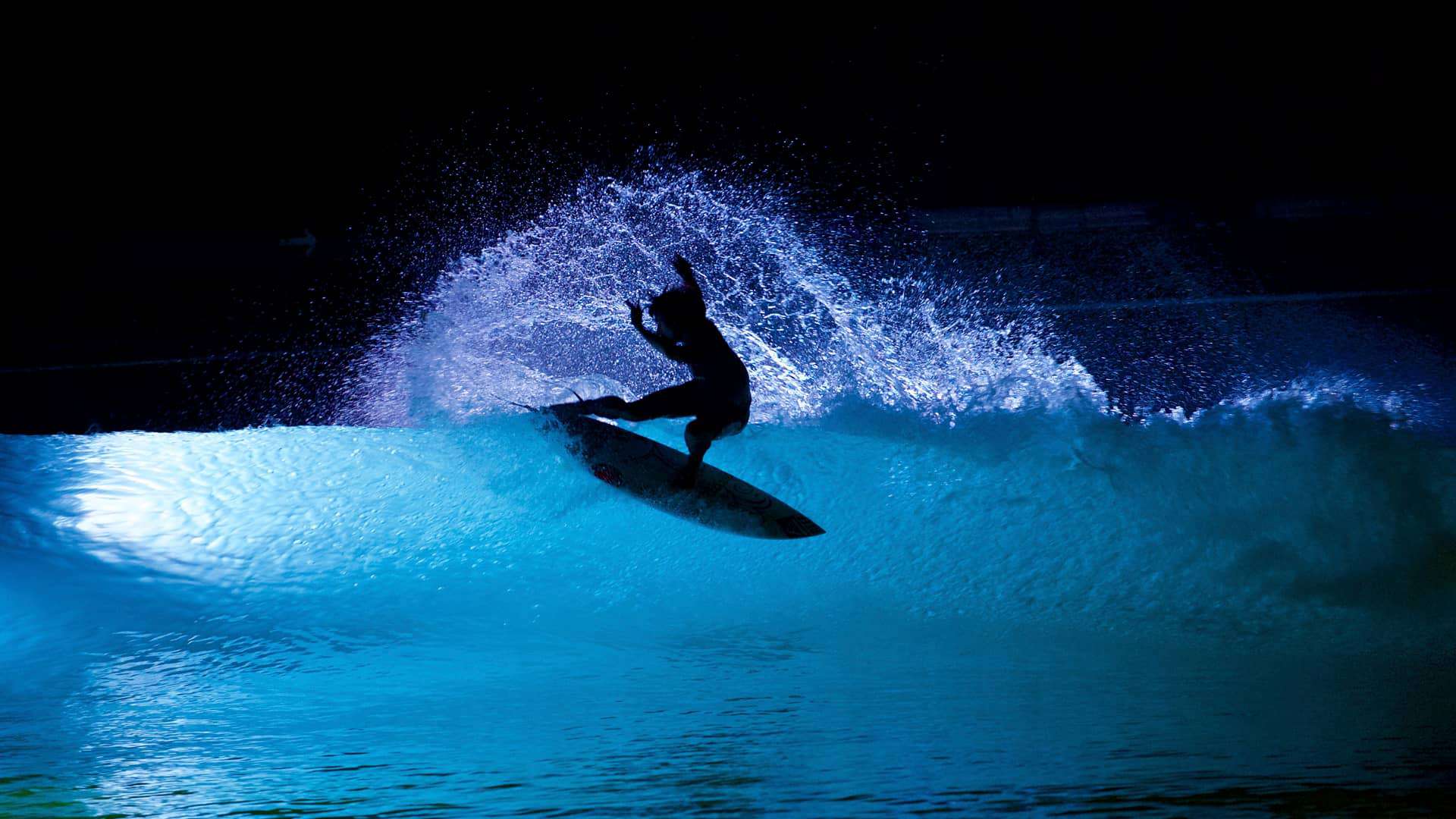Surfing at night is an exciting way to add an extra challenge to your favorite past time. It’s portrayed in movies as thrilling and even romantic, and many big-time surfers love to share stories about their best night surfs. My friends and I love night surfing, but we also know that it can be dangerous. I noticed that surfers often make the mistake of going out into the water late at night without ample preparation; I decided to write this blog post to share with you the safest way to night surf.
So, is surfing in the ocean at night dangerous? In short, no. It is not usually safe to surf at night. It is typically unsafe to surf at night because of a lack of visibility. If a surfer cannot see where they are, when the waves are coming, their nearby surroundings, or their beach marks, it is easy to get into trouble. Furthermore, surfing at night makes it difficult for your surfing buddies or people onshore to see you if you should need help.
Other factors contribute to making surfing at night unsafe. Luckily, there are ways to make night surfing safer. Just about anything can be done fairly safely if you take the correct precautions.
What makes surfing at night unsafe?
As stated, it is typically unsafe to surf at night because of a lack of visibility. Depending on how dark it is on a given night, it can be very difficult for surfers to see where they are in the water. This increases surfers’ risks for surfing into or close to obstacles such as piers, boats, rocks, other surfers, swimmers, cliffs or buoys. It is always important to remember to stay a far distance from all obstacles not only to avoid a collision but also to avoid potentially dangerous currents that usually occur close to obstacles in the water. Avoiding piers often gets complicated, considering that night surfers will often intentionally surf close to well-lit piers in pursuit of light.
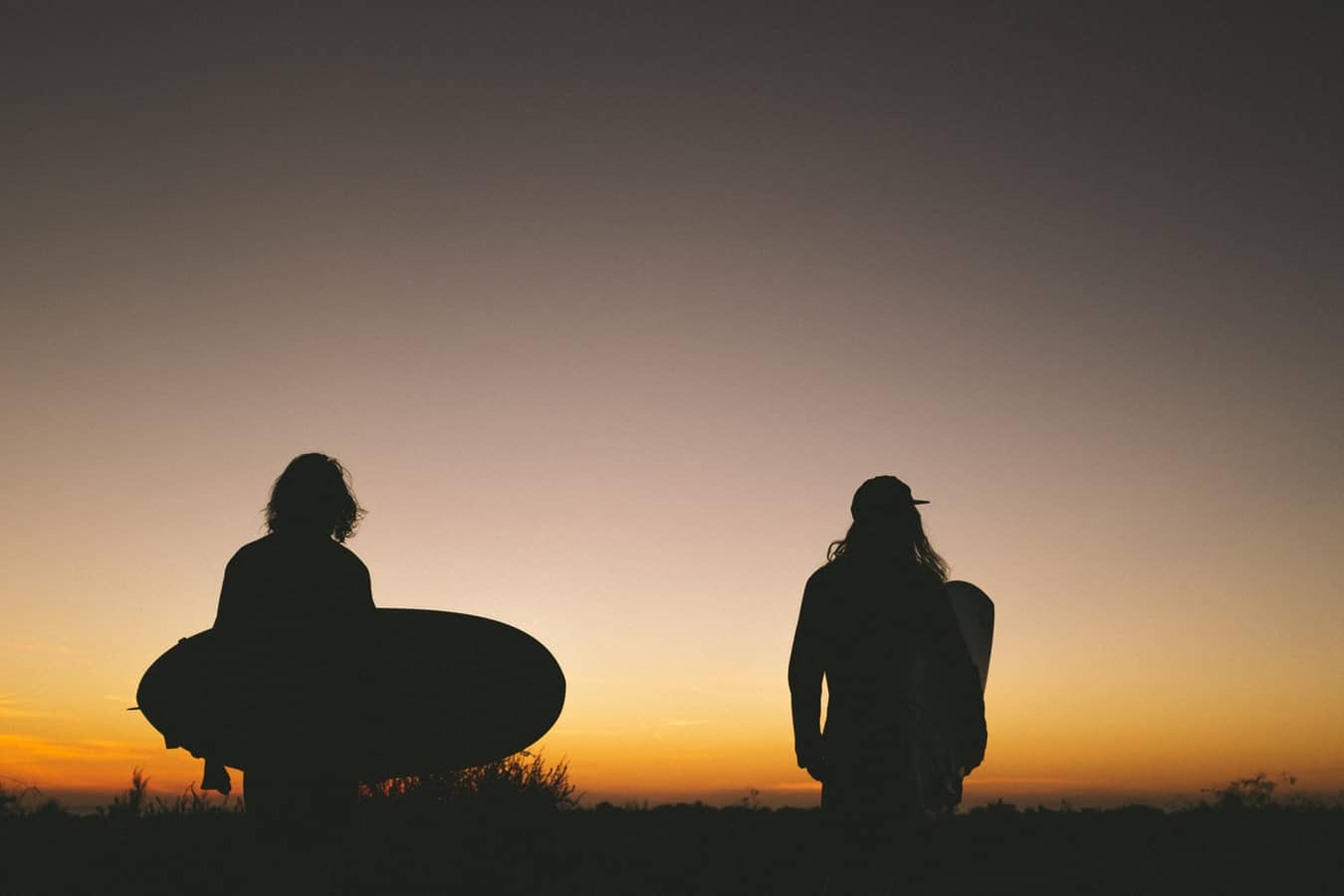
Surfing at night also makes it challenging to see when to catch a wave. We all know catching a wave is a very visual pursuit. If you’re a beginner surfer, this may look like sitting on the surfboard where the waves are breaking, watching the swell, estimating a wave’s speed and attempting to match your paddling speed to the wave’s. If you can’t see the swell or wave, it’s difficult to catch the right wave. As we know, it’s important to pick the right waves to catch. Catching the wrong wave can result in wiping out and potentially hurting yourself. Not being able to see the waves increases this risk.
Moreover, once you are able to catch a sweet wave, you must be careful while paddling back out. If you cannot see the waves clearly while you are paddling out, you run the risk of paddling straight into a fall line.
The lack of visibility while night surfing also makes it difficult for your surfing buddies or people onshore to see you if you should need help. Let’s say (knock on wood!) you take a rough fall and need help. It may be very difficult for your friends or passer-byers to locate you in the dark.
Lastly, entry and exit can be more dangerous in the dark. As always, it’s important for every surfer to plan out how they will make their way to and from a surf spot. This is necessary for safely avoiding obstacles and navigating currents and tides. It is essential to plan this in advance while you scout your surf spot. Moreover, it is extremely unsafe to enter the water by jumping off a rock or pier into surf during the dark. Avoid doing this at night.
Just as in daylight, it is always important to practice other standard safe surfing practices and keep a close tab on the condition of the ocean.
Take it from my personal experience – my friends and I have all found surfing at night to be a far more intense experience than surfing during the day. It definitely pushed my limits and required me to rely on my friends who called out waves for me (more on this later), and trust the ocean and myself. There were moments that I felt a jolt of fear and adrenaline run through my body as a wave snuck up on me, or I watched a friend tumble beneath the waves and reappear moments later. It is important to exercise caution and safety when surfing at night.
That being said, surfing at night is also an incredibly exciting experience. There are few things more peaceful than paddling out under a glowing moon and star gazing while waiting to catch a wave; not to mention the amazing thrill you feel when you catch a midnight wave! I’m personally a firm believer that just about anything can be done fairly safely if you take the correct precautions. Here are some main ways to make surfing at night safe:
How Do You Make Night Surfing Safer?
Surf with your friends! Surfing is better with friends – especially at night!
Because surfing at night poses a greater risk, it’s important to have some friends close by to help you should the need arise.
It’s also helpful to have a buddy to surf with at night to help you catch waves. It’s fun to try to feel out your waves when you can’t see them. However, if you’re eager to catch a wave, I’ve found it works great to have a buddy paddle out further to watch for waves and call out when I should start paddling.
When you’re surfing with friends at night, it’s very important to keep up your communication. Yep, that’s right – chat with your friends! Not only is it fun to catch up, it’s also a great way to keep tabs on your friends and locate them in the dark.
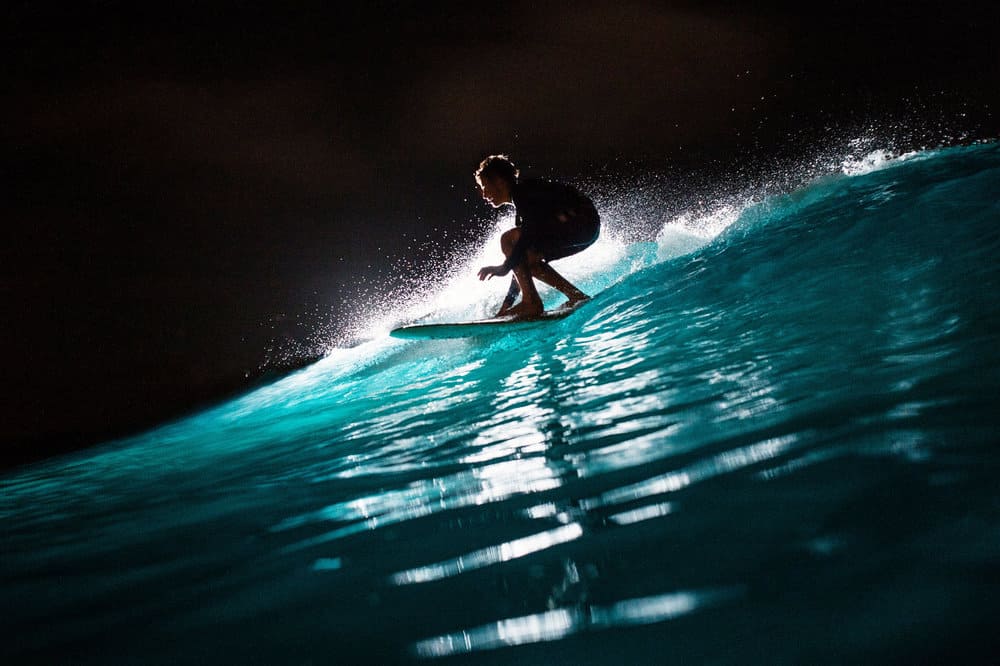
Tell someone onshore that you’re going night surfing!
As with any higher-risk sport (like backcountry hiking, mountain biking, etc.) where you may have limited contact with those not immediately with you, it’s important to tell someone you’re not with where you’re going, what you’re doing, and when you’ll be back from your activity. A sample text might be “Hey Chris, I’m going night surfing with Leeia and Imani where we went surfing yesterday at Padang Padang. We’re planning on finishing up around 12:30 pm at the latest. I’ll text you as soon as we finish.” This way, Chris knows exactly where you are and he can send help if he doesn’t hear from you by 12:30 pm. Plus, he might make you some midnight snacks for your post-surf grub!
Wear lights!
One of the best ways you can make night surfing safer is wearing lights. If you’re committed to night surfing, you may consider investing in some surfboard mountable LED lights. There are wide ranges of lights for purchase online with varied price points. These can amp up your surfing style with a range of colors. Many wrap around the outer circumference of your board, providing 360° visibility from over a half mile away.
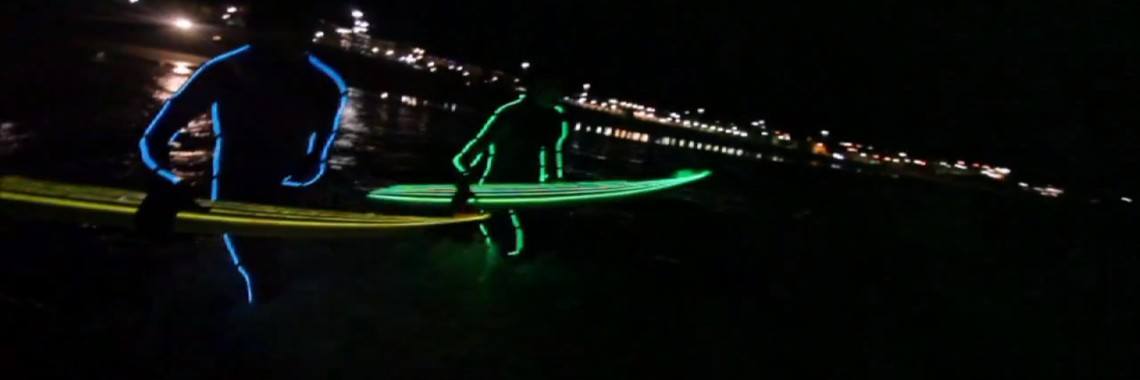
If you’re not looking to purchase a surfboard mountable LED light, just grab some glow sticks! You can get packs of glow sticks for less than $5USD online or in many large retail stores. Wear them as bracelets, necklaces, anklets, you name it! Not only does it look cool, it increases your safety by making you visible to your surfing buddies.
Choose where you surf carefully and scout your surf spot.
This applies for day and night surfing, but is particularly important for night surfing. I recommend that you only night surf at spots you’re already very comfortable with. It is not a good idea to get acquainted with an area and it’s obstacles and associated currents at night when you can’t see them. Go somewhere you know well and can navigate easily! If you don’t have a spot like this yet, spend some time getting to know an area during the day. Observe the possible obstacles, plan your entry and exit, and pay close attention to any regular currents and tides during the day before trying the spot out at night.
Please note, many night surfers like to surf next to a well-lit pier. Surfing next to a well-lit pier provides ample lighting. However, if you decide to do this, be careful of the currents nearby the pier, as well as the inherent risk of surfing nearby an obstacle.
Take Your Time And Choose The Right Night
There’s no need to rush this awesome experience. Make sure you take your time and pick a night to surf when the conditions are good. No matter how excited you are to night surf, a night with crazy winds going 20 miles an hour in all the wrong directions will be no fun at all. Moreover, it’s best if you can wait until a clear night. For example, if you go night surfing with heavy cloud cover during a new moon (when there’s no moon in the sky), it will be extremely dark and difficult to see anything around you. If you can, wait for clear skies or for the moon to be bigger. Plus, the less clouds, the more you can stargaze while you wait for the right wave!
Be extra cautious of sharks
You probably have a very small chance of facing a shark attack, but it’s always better to be safe than sorry! As always, check for warning signs onshore regarding any shark sightings. Always avoid areas of large fish populations. Large fish populations typically occur where rivers empty to the sea, as sharks are drawn to fish. Avoid swimming at dawn and dusk, when sharks feed. Don’t wear shiny jewelry that may glitter or shine underwater and cause sharks to mistake your rings for tiny fish. Stay away from dead sea animals. If you cut yourself and are bleeding, immediately get out of the water and do not continue surfing. Don’t flail around, and lastly, stay alert!
Follow the Moon
Surfing during a full moon is a spectacular thing to do with your friends. Full moons are celebrated all over the world for a huge diversity of reasons, and surfers are no exception to this! Surfing under a full moon is beautiful, peaceful, rejuvenating, and… safe! Full moons illuminate the night sky, providing lots of light and better visibility for night surfing. Full moons occur every 29.5 days, so you shouldn’t have to wait too long to go catch some waves under a full moon.
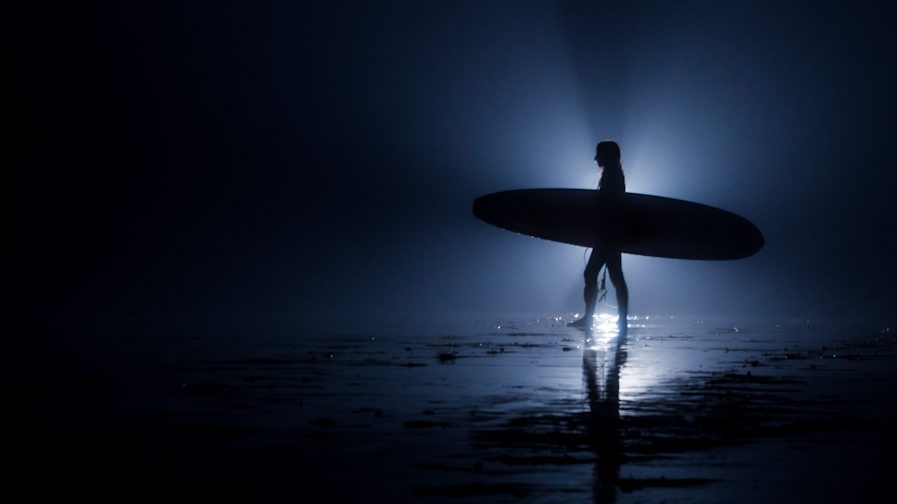
Know Your Limits
You know yourself more than anyone in the world. You know how strong you are and just what you’re capable of. Trust yourself and trust your gut. When the time is right for you to catch some waves in moonlight, it’ll happen! Take your time and lean into the experience.
It’s important that you take every precaution possible before night surfing. Grab your friends, scout out your surf spot, follow the moon, and bring some LED surf lights or glow sticks. Use whatever surfboard you are most comfortable with and surf within your ability level. Be safe and have fun! Surf’s up!
Related Questions:
What if I don’t have anyone to go surfing with?
No worries! There are many ways to find new friends to surf with. The two easiest ways are on Facebook or Meetup. Both of these websites are entirely free. Go onto either of these websites and type in your location and what activity you’re looking to share with others. For example: “Huntington Beach, Surfing group”. Chances are, there will be a group you can join! Once you’re a member, you can join group surf sessions or make a new friend online to go surfing with.
I’ve even heard of a recently famous surfing group in San Diego that is dedicated solely to night surfing! If you’re in the San Diego area, you’ll have to check it out.
Where are the best places to go night surfing?
This answer depends on where you are most comfortable surfing. You should only night surf in areas you are already familiar with. That being said, there are a few places around the world that light up surf spots with stadium lighting for night surfers. One of these places is the famous Komune Resort in Bali, Indonesia.
Are there any safety alert devices I can carry with me while I surf at night?
Awesome question. It’s clear you’re dedicated to your safety! Unfortunately, it doesn’t look like there are currently any emergency-call devices designed specifically for surfers. However, a waterproof smart watch would do the trick! You don’t need to invest in an expensive apple watch; there are many waterproof non-apple watches that would allow you to text or call for help if needed. When wearing the watch, remember to be cautious of wearing shiny jewelry in fear of attracting sharks.

